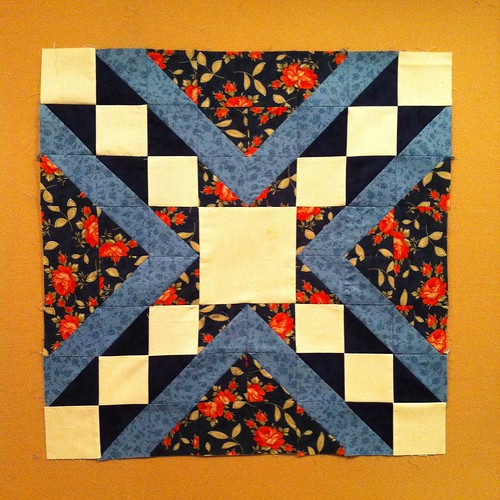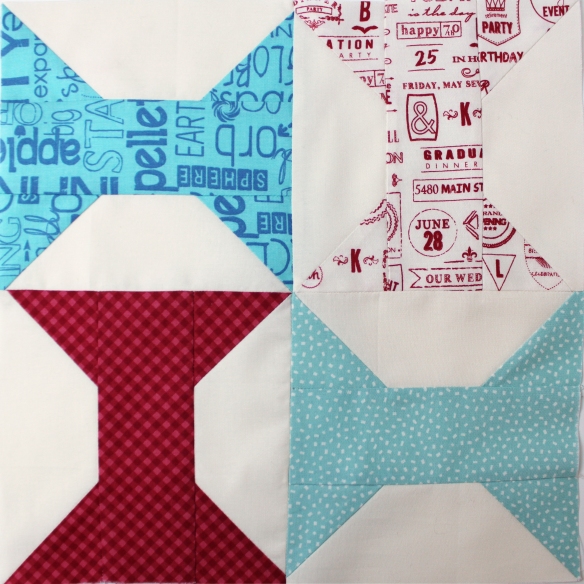 |
| Mildreds block |
 |
| My block |
Block 21-
Umbrella
When the
club members met to make the twenty-first block in the alphabet quilt they
found that “U” stood for an umbrella. “Of course, how stupid of us not to have
thought of that.” One woman who was a poor speller said she had decided that
the “U” block would represent an onion. She was laughed out of court and told
to consult her dictionary. “Onion begins with “O” silly, “said they.
“How are we
going to get those drops of rain, Nancy?”. “Of course you could use a whole
square of polka dots and appliqué the umbrella onto that, but since we have
kept all the others plain white gingham I thought we would embroider the dots
of rain. We can use satin stitch making tiny white rounds of dots, or we can
use French knots. If we use those, I suppose the rain is really hail, however.”
Had the club
been making this umbrella fifteen years ago they would have chosen black for
the top but in these days of gay color the umbrella may be any shade at all.
One member wanted to chose red but since harsh, strong colors have been omitted
entirely in the patterns it was deemed wise to choose some other color for the
top. Otherwise the re umbrella would stand out in the finished quilt like a
sore thumb.
Most of the
members chose a violet or lavender color. Nancy’s choice was soft rose. That
was because she knew about the block that would be next to the umbrella one.
She did not want to repeat colors. One member chose soft blue and another
beautiful green.
The 6 ½ inch
square of white gingham was cut out, so
was the square in the paper. The cloth was held closely over the paper pattern
and both were pressed against the window
pane. With a sharp pointed lead pencil the pattern was traced onto the cloth. A
mere point indicated the spots of rain.
The paper
pattern was pasted onto a lightweight cardboard or tag board and dried under
pressure.
While it
dried the letter “U” was embroidered in fast-colored embroidery cotton. Nancy
used green to match all her other letters. Then, too, she had chosen green
gingham for her connecting strips in the finished quilt.
After the
pattern was dry the umbrella top was cut out and then the handle. The stick was
cut in one piece so that it extended from the curved handle to the tip. Even
though it did not show when the umbrella top was appliquéd Nancy found it was
easier to do than if she cut two pieces.
The stick
was cut from a bias piece and was made just twice as wide as the finished
stick. The edges were turned under until they met at the center and were then
basted in place.
The top was
cut with an allowance of a quarter-inch on all sides. This was turned under,
basted in place and then the piece was pressed.
Nancy found
that small slits at the edge made it easier to turn the curve at the handle and
the curves in the umbrella top.
The pieces
were pinned in place and then basted and later appliquéd with fine, slanting
hemming stitch. Then the dots were embroidered and another block was ready.
Oops I almost forgot the pattern: click HERE for the pattern.
Only three more blocks are left after this! Stay tuned for more!
Happy Stitching,
Deb
Oops I almost forgot the pattern: click HERE for the pattern.
Only three more blocks are left after this! Stay tuned for more!
Happy Stitching,
Deb











